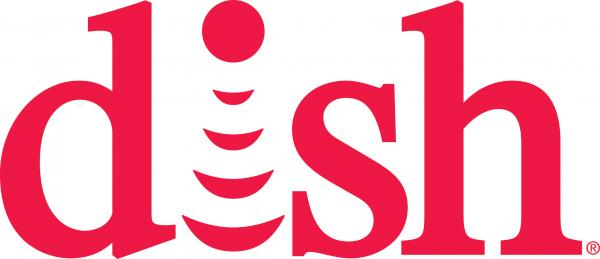-

-
pdf (6.4 MB)
The merger’s claimed benefits, if any, cannot outweigh the merger’s harms. In the Opposition, the Applicants devote hundreds of pages to extolling the purported benefits of the merger. Many of these benefits are illusory or speculative—characteristically, the Applicants offer no more precise quantification than
ENGLEWOOD, Colo.--(BUSINESS WIRE)--Citing irreparable harm to competition and consumers, and no discernible benefits, from the proposed union of the first and second largest cable companies in the nation, DISH Network Corp. (NASDAQ: DISH) filed its Reply today at the FCC to Comcast-Time Warner Cable’s (TWC) Opposition to the Petitions to Deny their proposed merger. The reply is available here.
“Everyone who likes to watch high-quality online video has particular reason to worry about the proposed merger,” said Jeff Blum, senior vice president and deputy general counsel for DISH. “More than 54 percent of the country's high-speed broadband connections would be controlled by the combined company, and all online video distributors would be at the mercy of Comcast-TWC.”
Some key points from DISH’s reply include:
p.4
“As companies such as DISH innovate and invest to meet the growing consumer demand for broadband-reliant video products and services, this chokehold over the broadband pipe would stifle future video competition and innovation, all to the detriment of consumers and the public interest. No set of conditions could conceivably alleviate these harms.”
p.4
“The Commission’s transaction review comes down to a simple question: does the merger serve the public interest? Based on the facts and the law, the answer is straightforward: no.”
p.13
“Comcast-TWC will be able to destroy OVDs with impunity. And destroy them it will: DISH’s experience based on the business case for DISH World and DISH’s soon-to-be-launched domestic OTT service demonstrates that an OTT could still turn a profit if it were to suffer foreclosure at the hands of a standalone Comcast, but not if the effects of the foreclosure spread across both of the Applicants’ systems. Based on his analysis of that business case, DISH’s expert economist Professor David Sappington concludes that, while foreclosure conduct on the part of Comcast today is probably survivable for an OVD such as DISH’s new OTT service, the same conduct would be lethal if undertaken by Comcast-TWC.”
p.20
“The Applicants bear the burden of proving that their unprecedented merger will serve the public interest. To satisfy that burden in light of the merger’s competitive harms, they need to climb a metaphorical Mt. Everest; but they are still on the tarmac at Philadelphia International Airport. Of course, the arguments that Comcast and TWC have left unaddressed reflect their larger problem: they cannot show that concentrating access to half of the country’s high-speed broadband subscribers in a single company would serve the public interest.”
p.7-8
“Almost no broadband subscribers seem to leave Comcast today. The Applicants claim that a large number of subscribers leave Comcast today and therefore would also leave the new Comcast, too, if it were to misbehave by blocking or degrading their service… This claim is the basis of the Applicants’ contention that the combined company would have no incentive to block or degrade OVDs. … But the Applicants’ central factual contention is demonstrably false… Comcast is almost like the Hotel California of broadband, an establishment guests can check into but never leave.”
p.27-28
“Starting in late 2013, the speed at which Comcast’s customers were able to access Netflix content dropped from about 2.1 Mbps in October 2013 to 1.5 Mbps in January 2014—a 25 percent decline. As a consequence of that decline, Comcast’s customers went from being able to access Netflix content at 720p to “nearly VHS quality.” … What actually happened was enlightening. Comcast says that the incident produced a dramatic increase in Netflix-related customer calls. The customers who called Comcast to complain, however, appear to have been venting their anger at their powerlessness to choose another provider. Because very few … of them seem to have left Comcast.”
p.4
“As the petitions and comments demonstrate, high-speed cable broadband connections are the lifeblood of over-the-top (“OTT”) video services that typically target national audiences. For that reason, among others, the relevant geographic market for this transaction is national. Furthermore, the relevant product market should include only those services capable of supporting the robust online video services that consumers demand, which requires a household to have actual and consistent download speeds of at least 25 Megabits per second (“Mbps”). If approved, the combined Comcast-TWC would control more than 54percent of the broadband pipes in the United States that have speeds of at least 25 Mbps, and will be on a path to virtual dominance of the high-speed broadband market given that the combined company will pass nearly 70 percent of pay-TV households in the U.S.”
p.10-11
“But the most effective witness against the Applicants’ advocacy is Comcast and TWC’s own marketing. While the Applicants tout a speed of 4 Mbps as suitable for HD video in this proceeding, their marketing documents … tell an entirely different story—they present 6 Mbps as suitable for sharing photos/downloading music, but a minimum of 50 Mbps as suitable for streaming/downloading HD video.”
p.16
“Use of the Commission’s own method for estimating actual departures of a rival’s subscribers due to temporary foreclosure with a time horizon of six months leads to the conclusion that Comcast-TWC can reap eye-popping gains from denying its competitors NBCU programming. This will affect competition in a number of ways. It will cause subscribers to leave the competing distributor in favor of Comcast-TWC; it will cause dissatisfied Comcast-TWC subscribers to stay put instead of losing their access to NBCU; and it will let NBCU extract higher prices for its own programming by leveraging the fear of foreclosure.”
p.16-17
“The merger’s claimed benefits, if any, cannot outweigh the merger’s harms. In the Opposition, the Applicants devote hundreds of pages to extolling the purported benefits of the merger. Many of these benefits are illusory or speculative—characteristically, the Applicants offer no more precise quantification than “hundreds of millions of dollars.” Many of the benefits are also not merger-specific. The upgrade of TWC systems, supposedly made possible thanks to the merger, is a prime example. Public documents show that TWC had planned to complete this transition itself as a standalone company. This means that large portions of the claimed benefits attributed to TWC upgrades (again left unquantified) should be disallowed in their entirety.”
p.18
“Conduct conditions would fail to address the merger’s many harms. Conduct conditions did not work for Comcast-NBCU, and they would not work for this transaction, which poses substantially greater risks of harm. There is little reason to believe that Comcast will alter its pattern of repeatedly breaking promises. Moreover, the complexity of the gatekeeping function over the Internet choke points alone promises a myriad of technicalities that would likely allow circumvention of, and/or interpretive debate over, any conditions. Ultimately, if the Commission approves the merger believing that conditions are sufficient to address all the harms, there is no going back. The consequences of getting it wrong are too great, the risks too high. The public deserves better.”
p.121
“Comcast did everything it could to circumvent implementation of the simple and clear news neighborhooding condition for more than three years. Bloomberg’s three-year ordeal ended only after Comcast decided to acquire TWC.”
p.6-7
“The Applicants fail to disprove the merger’s anticompetitive effects. What the Opposition does not do is address several critical arguments made by DISH and others about the harms that would result from this proposed transaction. In some cases, the Applicants give conclusory, dismissive responses. In other instances, they do not bother to respond at all. The gaping holes in the Opposition include:
- The applicable case law—nothing said at all except for one case;
- The ability to foreclose OVDs—little said consisting of some token objections relating to the Applicants’ three choke points;
- The proportionately smaller costs and larger profits of foreclosure due to the merger—nothing said at all;
- The reduced ability of consumers to benchmark based on neighboring offerings—the Applicants respond only that this reduced ability will not lead to higher prices;
- The argument previously made by Comcast’s own economist that the existence of TWC as a separate company made NBCU foreclosure unprofitable for Comcast—nothing said at all; and
- The examples of Comcast playing for time and thwarting the conditions already imposed on it—only two out of four examples identified by merger opponents are addressed, and even then only cursorily.
Instead, the Applicants hang their case on one main claim: that the new Comcast-TWC would not have an incentive to foreclose other distributors because it would lose subscribers if it did so. This claim is disproved by the very data that Comcast has submitted to the Commission, leaving the merger indefensible.”
About DISH
DISH Network Corporation (NASDAQ: DISH), through its subsidiaries, provides approximately 14.041 million pay-TV subscribers, as of Sept. 30, 2014, with the highest quality programming and technology with the most choices at the best value. Subscribers enjoy a high definition line-up with more than 200 national HD channels, the most international channels, and award-winning HD and DVR technology. DISH Network Corporation is a Fortune 250 company. Visit www.dish.com.
Photos/Multimedia Gallery Available: http://www.businesswire.com/multimedia/home/20141222005972/en/
Contact:
DISH Network Corporation
Jenna McMullin, 303-723-1695
jenna.mcmullin@dish.com
@DISHNews
 DISH NEWS
DISH NEWS



